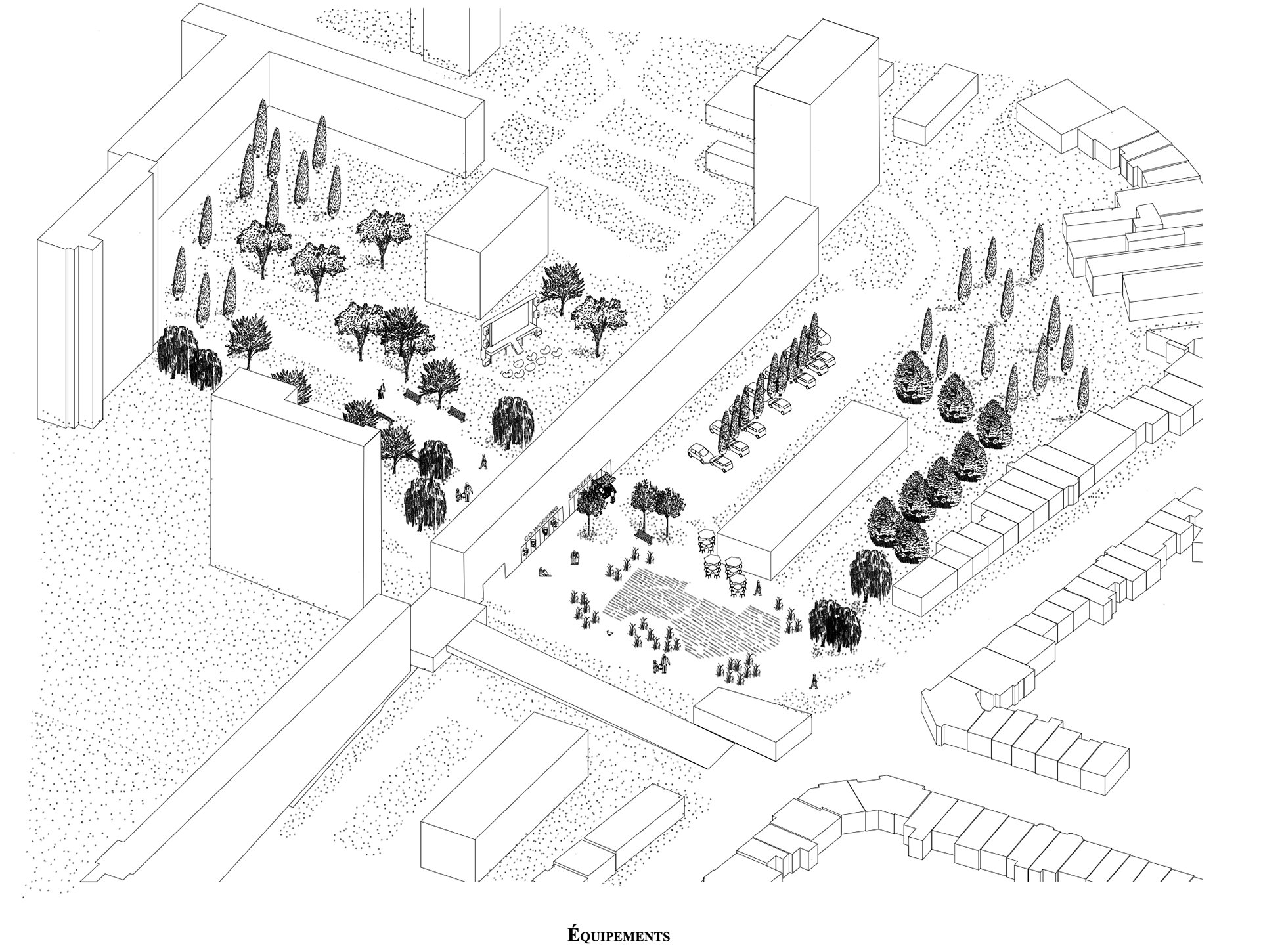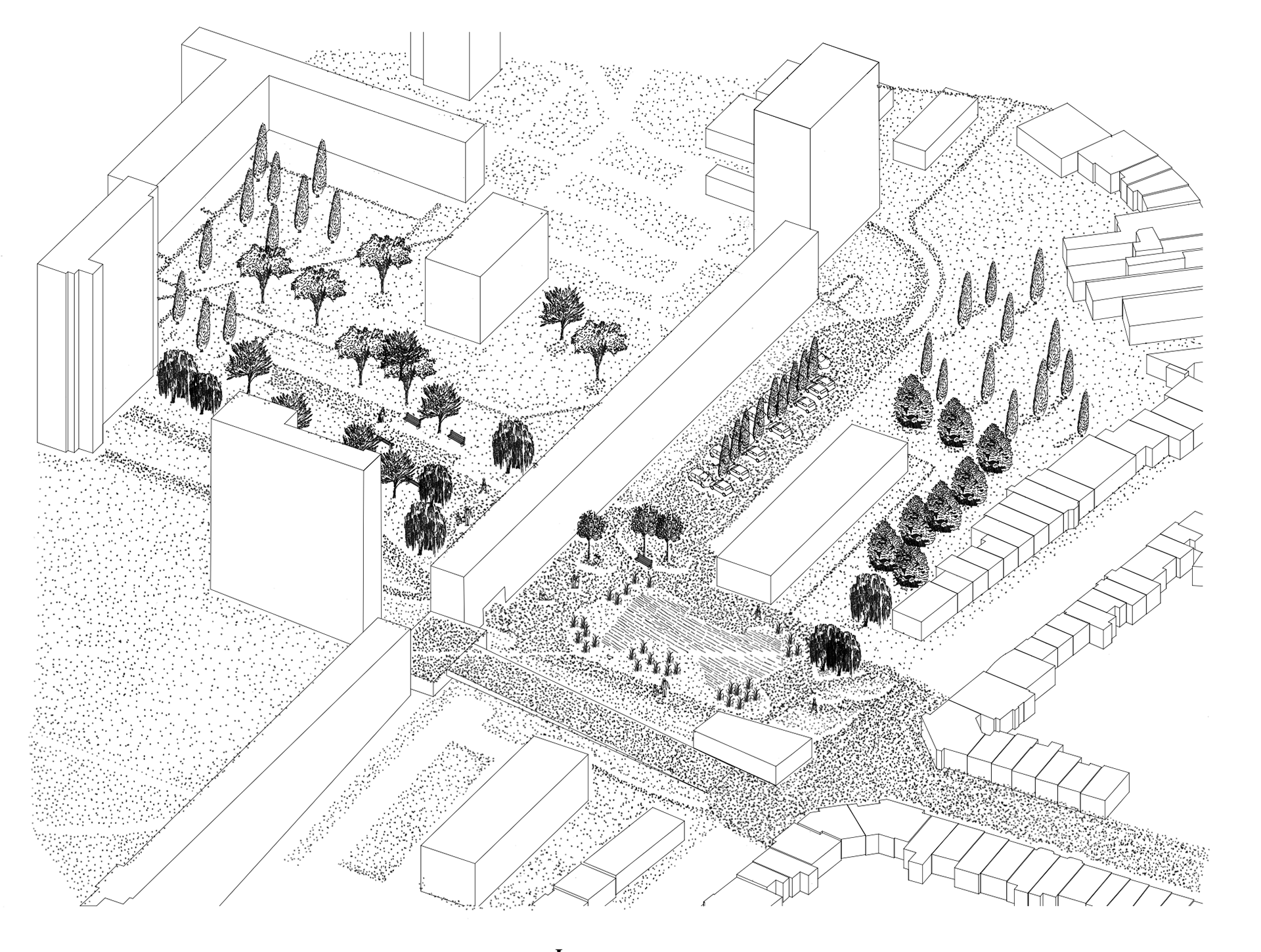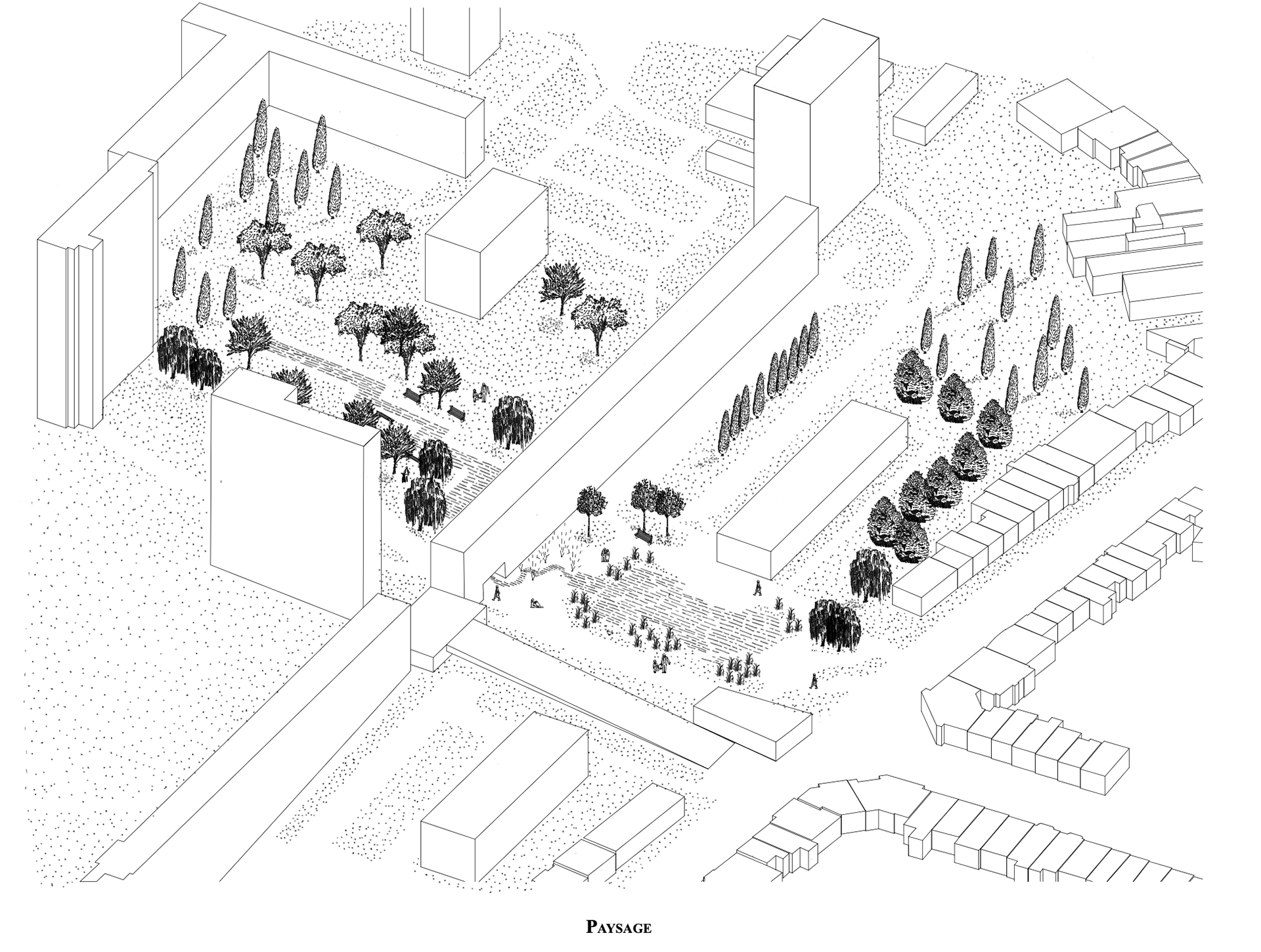The Cité Modèle, or a true piece of an autonomous city, was designed to offer its inhabitants all the advantages of a real city in a healthy environment, close to nature. This was the grand ambition (or utopia?) of modernism in its realization.
The Cité was supposed to provide all the services and facilities its inhabitants would need, yet due to budgetary constraints, the list of infrastructures was reduced to a limited few: the sports center, the church, the school, the restaurant, and the health center were never built... Over the years, this requalification turned the Cité Modèle into a dormitory town where the car reigns supreme.
Nevertheless, in light of the principles of Care, it is still possible to overcome the divisions between nature and culture inherited from modernity, reinventing our relationship with the living—both human and non-human.
Thus, elements such as the park, public spaces, and places for exchange and sharing can become true vectors of a larger landscape for the Cité.
The Cité modèle has a large number of access points, such as the highway, the subway, the tram, the bus... However, the city remains enclosed. Therefore, we want to use these connections to reconnect the city to its context.
The Cité modèle has various activities throughout the year. Different associations are present, such as the ASBL, which operates on various scales. Whether it's to find social housing or to improve and promote community living within the city, they organize several participatory and inclusive projects.
Every year, Cité Modèle hosts many events, such as the neighborhood party, cleanup day, community oven, reading in the park, the comic book route... among others. During the summer, the FLM route is traveled by a tourist train provided to the residents, connecting Cité Modèle, the North neighborhood, Laeken, and the city center.
Every year, Cité Modèle hosts many events, such as the neighborhood party, cleanup day, community oven, reading in the park, the comic book route... among others. During the summer, the FLM route is traveled by a tourist train provided to the residents, connecting Cité Modèle, the North neighborhood, Laeken, and the city center.
The Cité Modèle is located between two natural poles, which gives it the potential for reconnection with nature and biodiversity. Some existing landscape elements already offer the possibility of connecting to these spaces. However, this is not enough. That is why we plan to use landscaping to make Cité Modèle more porous in relation to its context.

Équipements

Infrastructure

Paysage
After identifying the three levers of the project, we gathered all of them to create possible connections between the neighborhood and the city. To achieve this, we made several interventions, first at the level of the ground materiality, aiming to unify the city and its “exterior.” Secondly, we worked on the ground floor of the bar building, creating openings and installing associative and cultural programs for both the city and the neighborhood. These visual openings allow for the creation of an indirect link with the heart of the city and its surroundings. Lastly, an intervention was made in the landscaping.